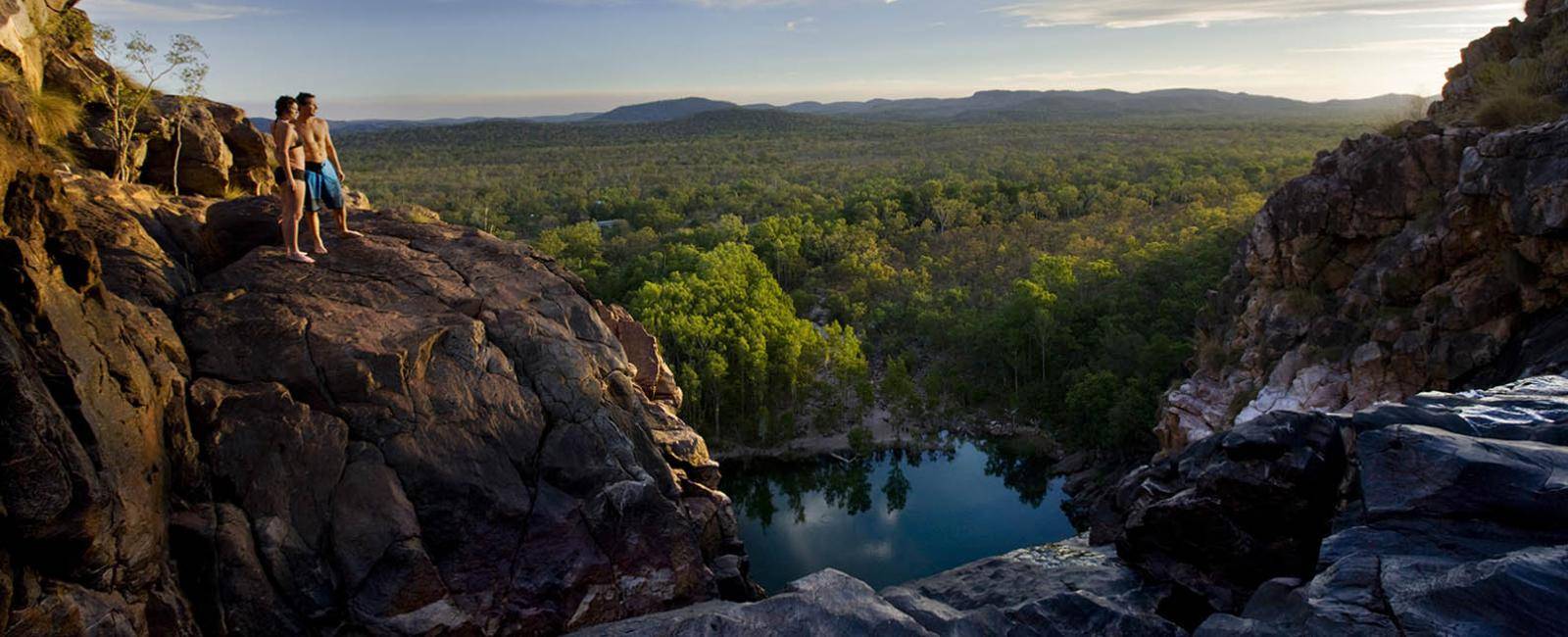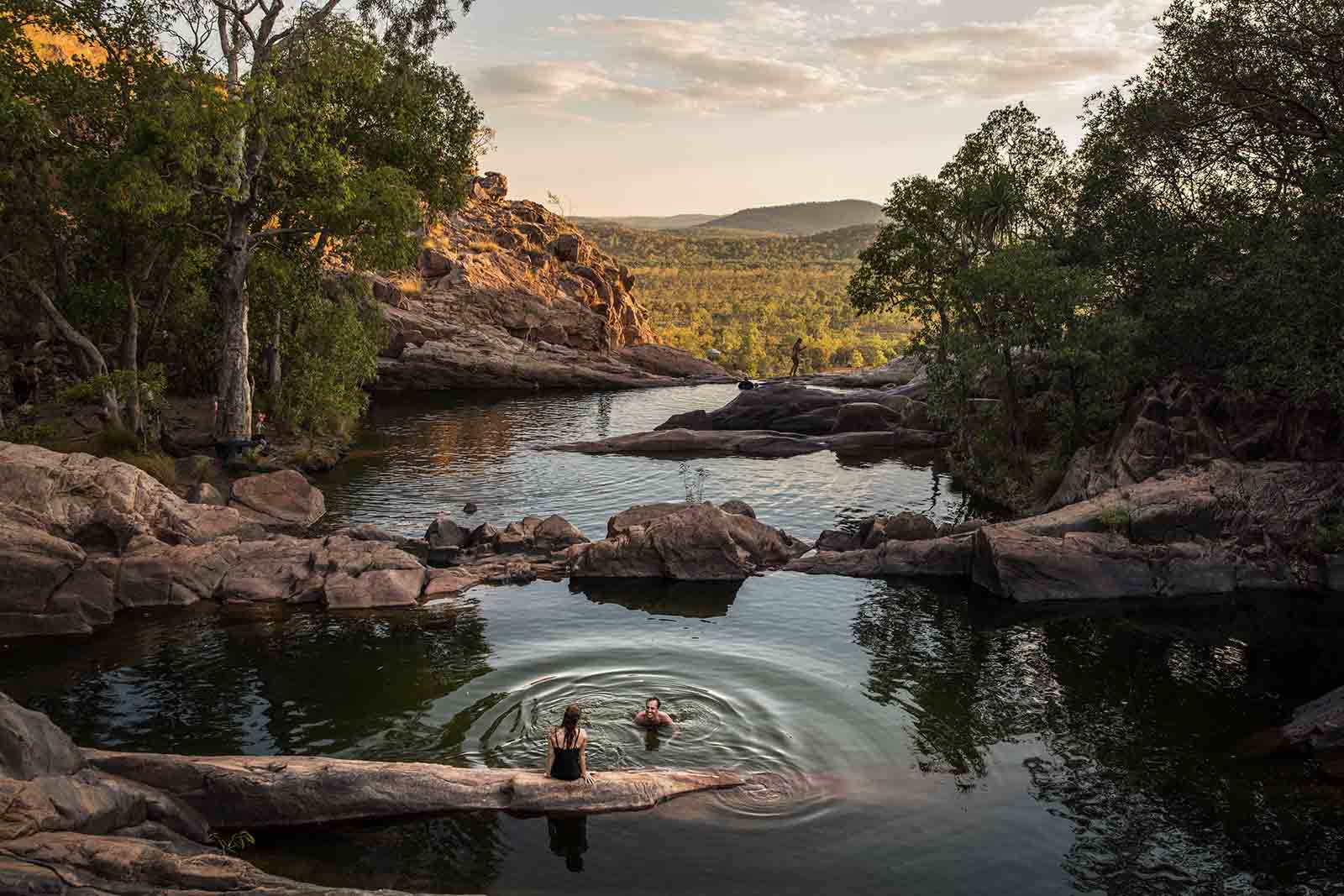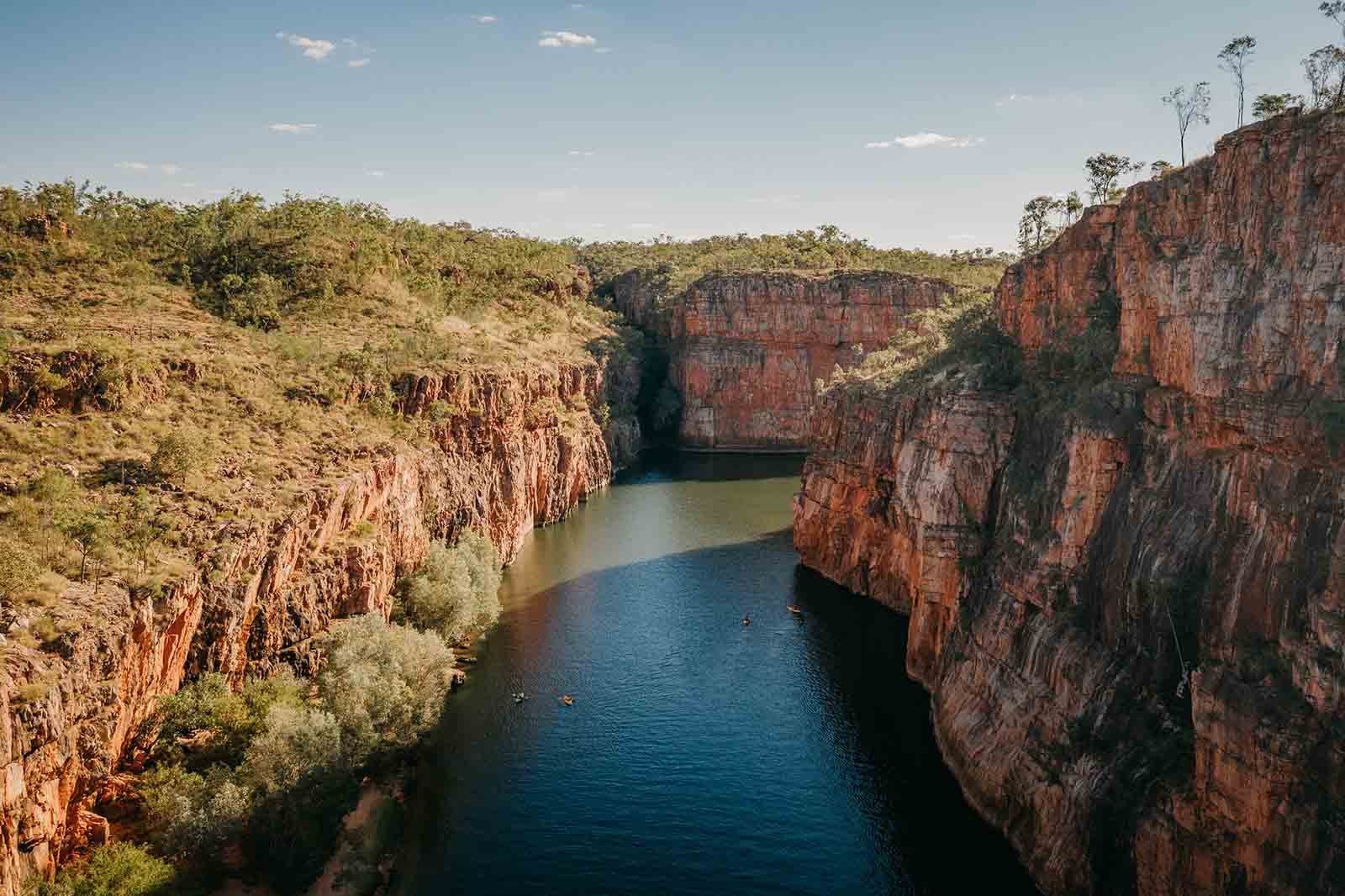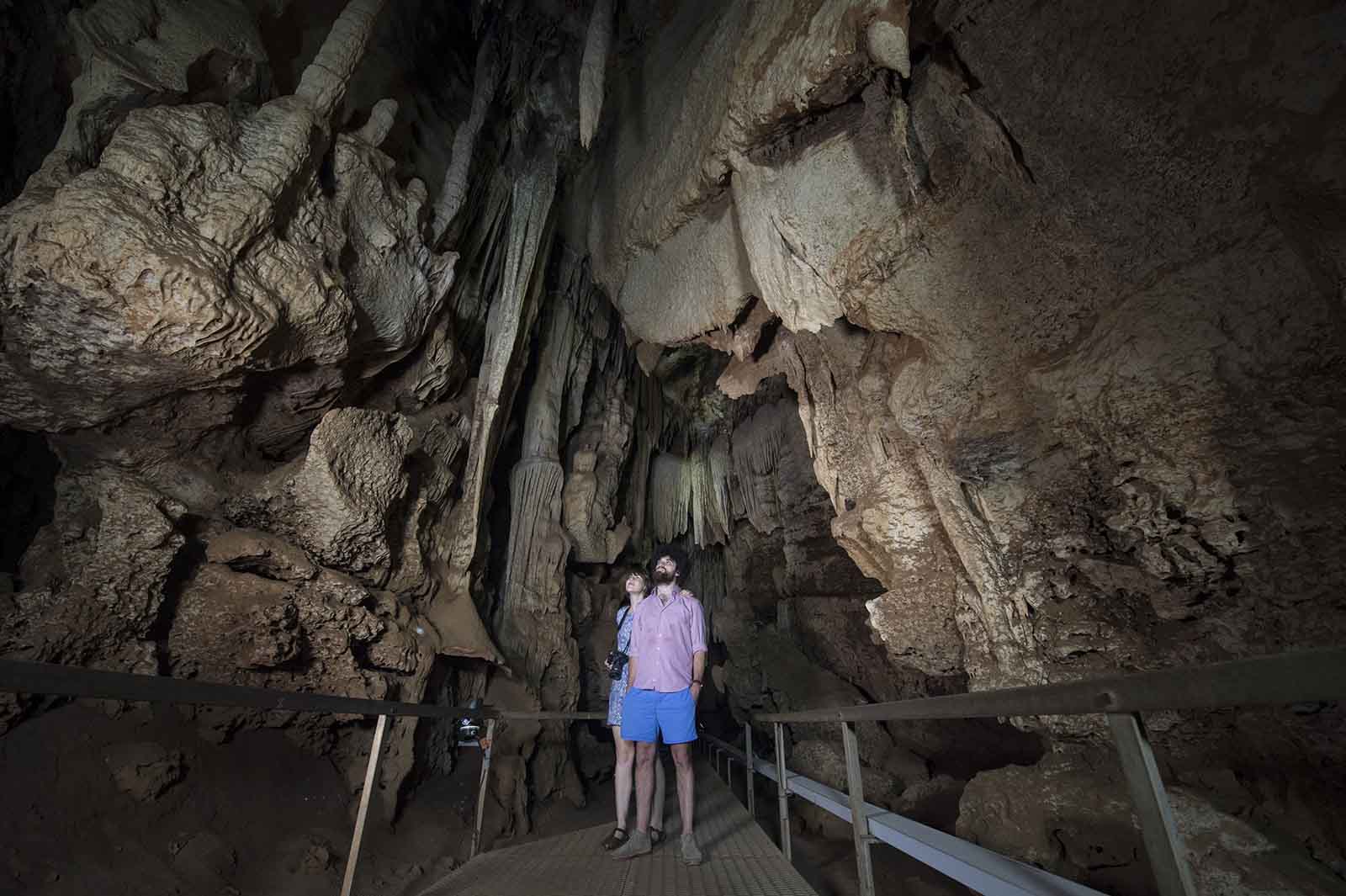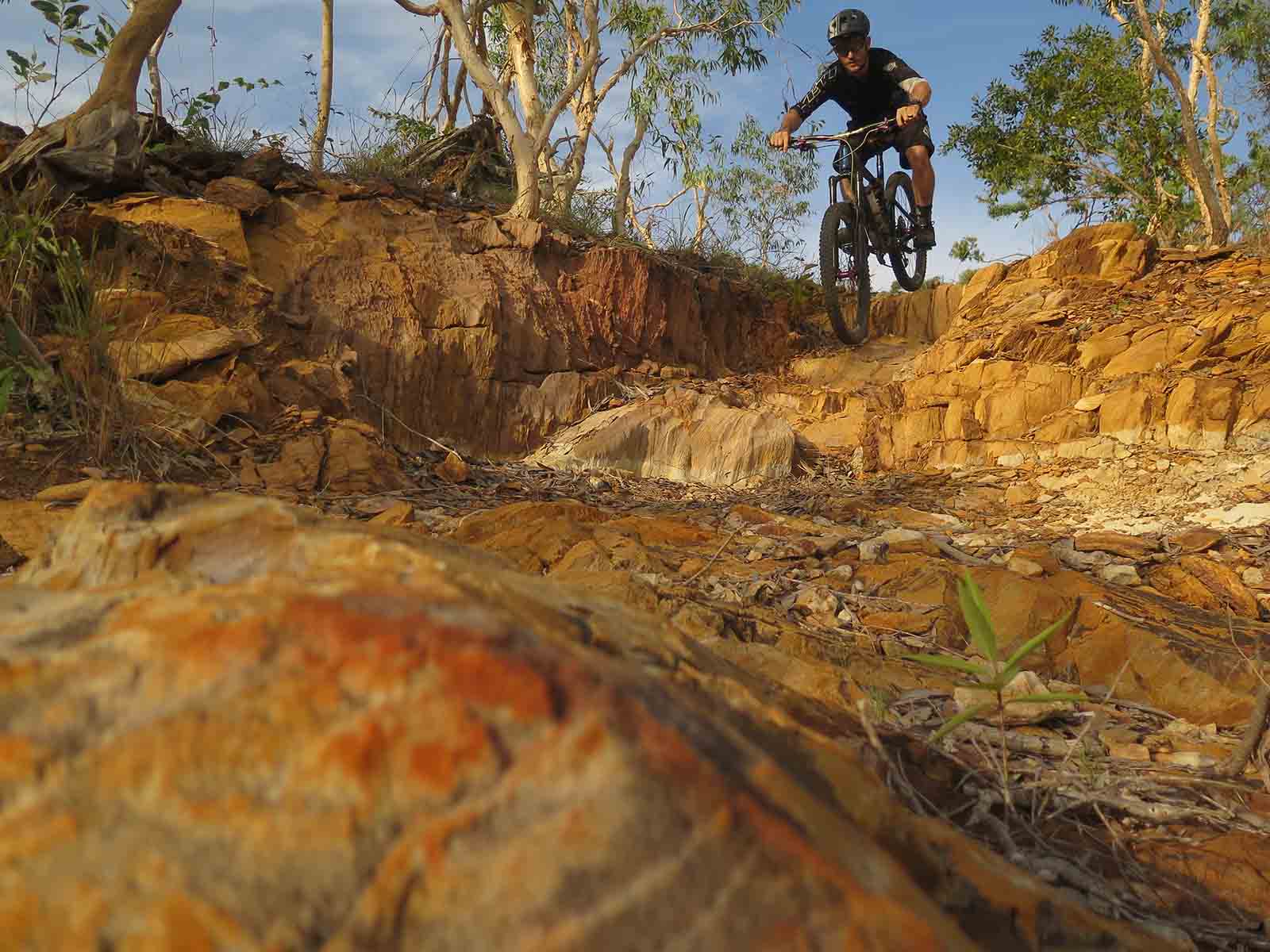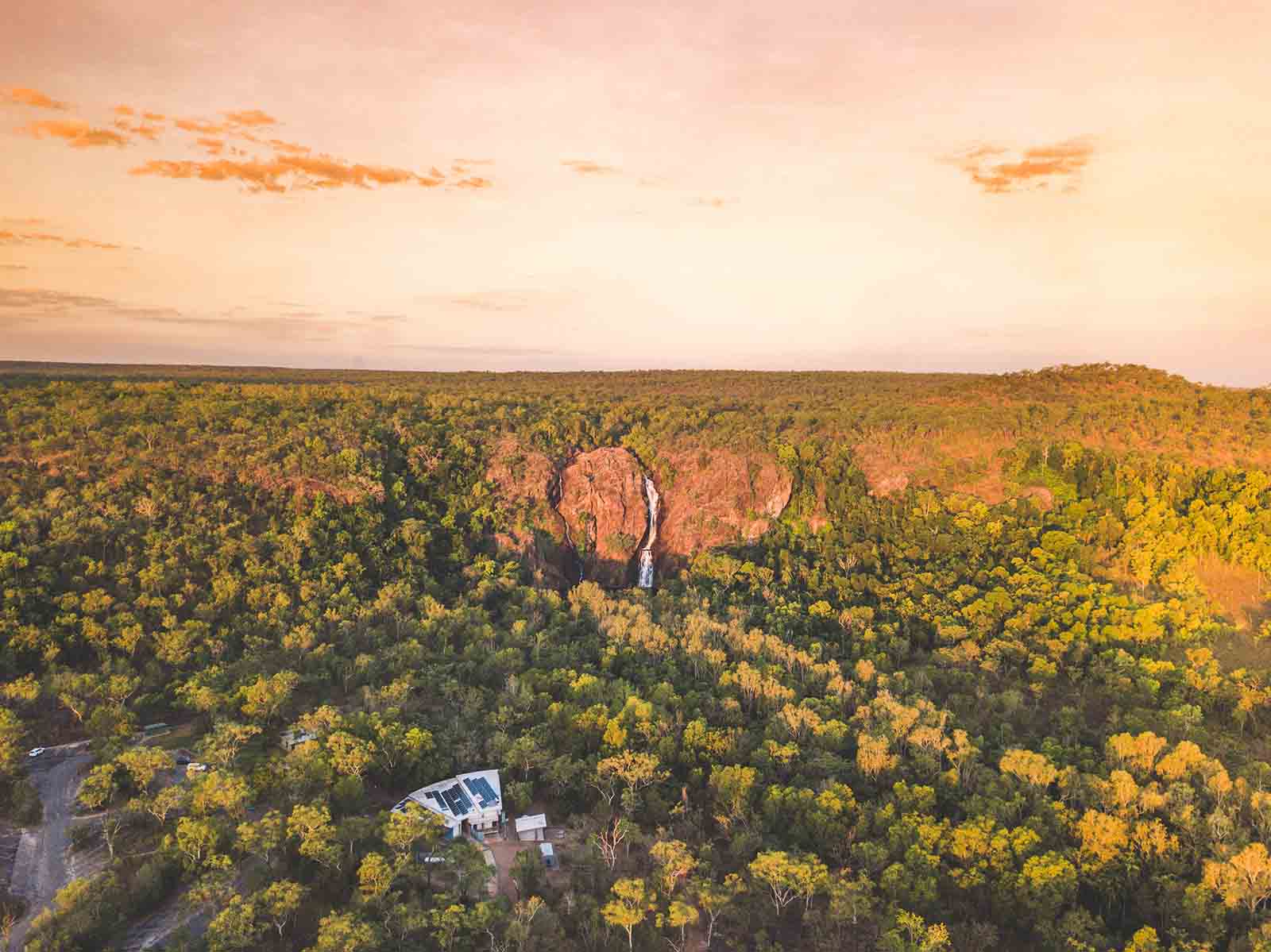
If you thought the Northern Territory was all red dirt and cowboy hats, there’s lots more for you to learn about the most northern capital city of Australia, Darwin.
Its population might earn the city of Darwin the crown as Australia’s smallest capital city, but it’s rainfall positions it as the wettest.
Where it rains, it waterfalls; and thanks to that, Darwin’s natural encounters come by the ute-load.
If you find yourself in the Top End, check out these national parks within the CBD’s reach.
1. Litchfield National Park
If they were running a beauty competition for most photogenic national parks, Litchfield National Park would beat out all competitors for the sash and crown.
It covers approximately 1500km2, making it two and a half times the size of Disneyland. The similarities don’t stop there either, Litchfield National Park could easily rival the former’s title as happiest place on earth – at least if you ask anyone cooling off in its natural swimming holes in summer.
Pack your swimmers and keep your camera handy for its famous three waterfalls – Florence, Wangi and Buley Rockhole.
You’ll get a taste of what the outback is all about as you wander The Lost City, a concrete clay jungle made of termite mounds, which are all built in a north-south orientation in Mother Nature’s answer to town planning.
Sure, Litchfield National Park could be explored in a day. But if you’re serious about your bushwalking, make a weekend out of it, tackling one of the multi-day hikes, camping your way across the park.
2. Kakadu National Park
Ever wondered what 20,000 square kilometres of pristine wilderness looks like? Find out at Kakadu, a national park that gives the country of Slovenia a run for its money when it comes to size and scale.
Kakadu National Park has history written on its walls, with over 5,000 recorded Indigenous art sites dotted between its borders.
You’ll want to pack your swimmers for this national park whose waterfalls prove mother-nature is the best pool builder in the world.
Don’t believe us? Search Instagram for pictures of Gunlom Plunge Pool to find the Northern Territory’s most famous naturally formed infinity pool with views to boot.
It’s not just us who think this pool is something to send via postcard back home, Australian Traveller voted the Gunlom Top Pools within Australia's Top 100 best views.
3. Katherine Gorge
You might be heading further away from the coastline, but you won’t be short of water views with a visit to Nitmiluk National Park aka Katherine Gorge.
Time your visit for sunrise or sunset cruises to see 50 shades of auburn as the gorge turns ombre red.
The best way to experience the gorge is at water level – and you have the choice of canoe or flat bottom boat to explore the landscape.
Pack your hiking boots too – you’ll need them – with trails leading to waterfalls, or for serious adventure junkies, the 62km, multi-day Jatbula Trail.
Given the drive back to the capital city will take a couple of hours, you’ll likely want to stay overnight at Katherine Gorge at one of the two campgrounds with tent and caravan sites.
4. Cutta Cutta Caves Nature Park
Not all nature is above the surface – to find the Cutta Cutta Caves Nature Park you’ll need to dip 15m below the surface.
Once underground, you’ll be face to face with this limestone cave system which spans just shy of 1,500 hectares. Don’t worry, you won’t be finding your way in the dark, only one cave is open to the public and is perfectly accessible with lighting and walkways.
You’ll be thankful to have a guide to explore the caves, which are rich with Indigenous Dreamtime stories.
Keep your eyes peeled for more than just stalactite and stalagmite formations, it’s not uncommon to see the ghost bat and (harmless) brown tree snake.
5. Charles Darwin National Park
Made it to the Top End and don’t want to leave the shadows of the CBD? We get it – hiring a car can be costly, but that doesn’t mean you have to miss out on the national park action.
Charles Darwin National Park is in the centre of the CBD action, packing into its 13 square kilometres both modern (WW2) and ancient (Indigenous) history.
It’s dubbed one of Australia's most important wetlands for good reason, with over 51 mangrove species alone.
Take a stroll to discover historic sights and interpretive signage that explain Darwin's role in the Pacific War.
PLAN YOUR TRAVEL
GETTING THERE

